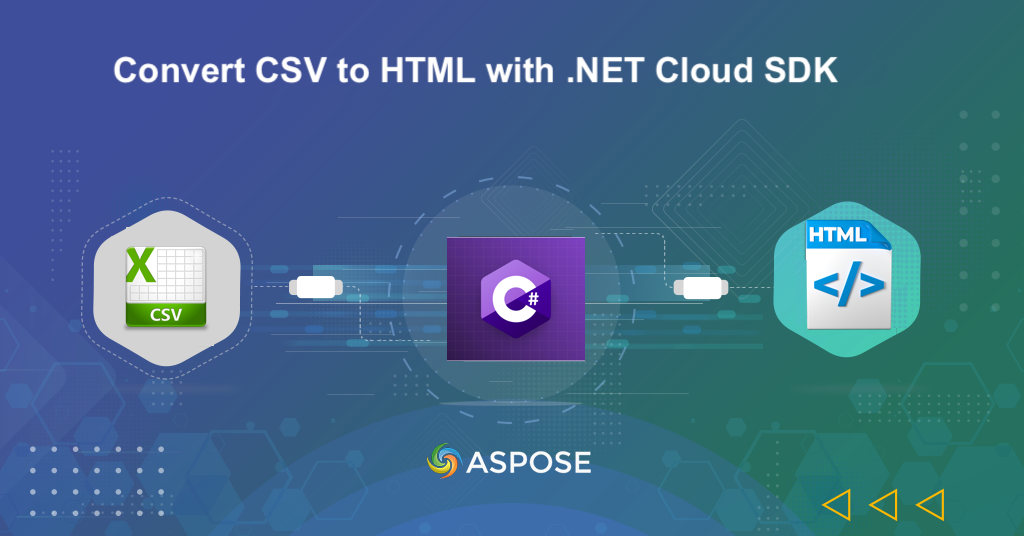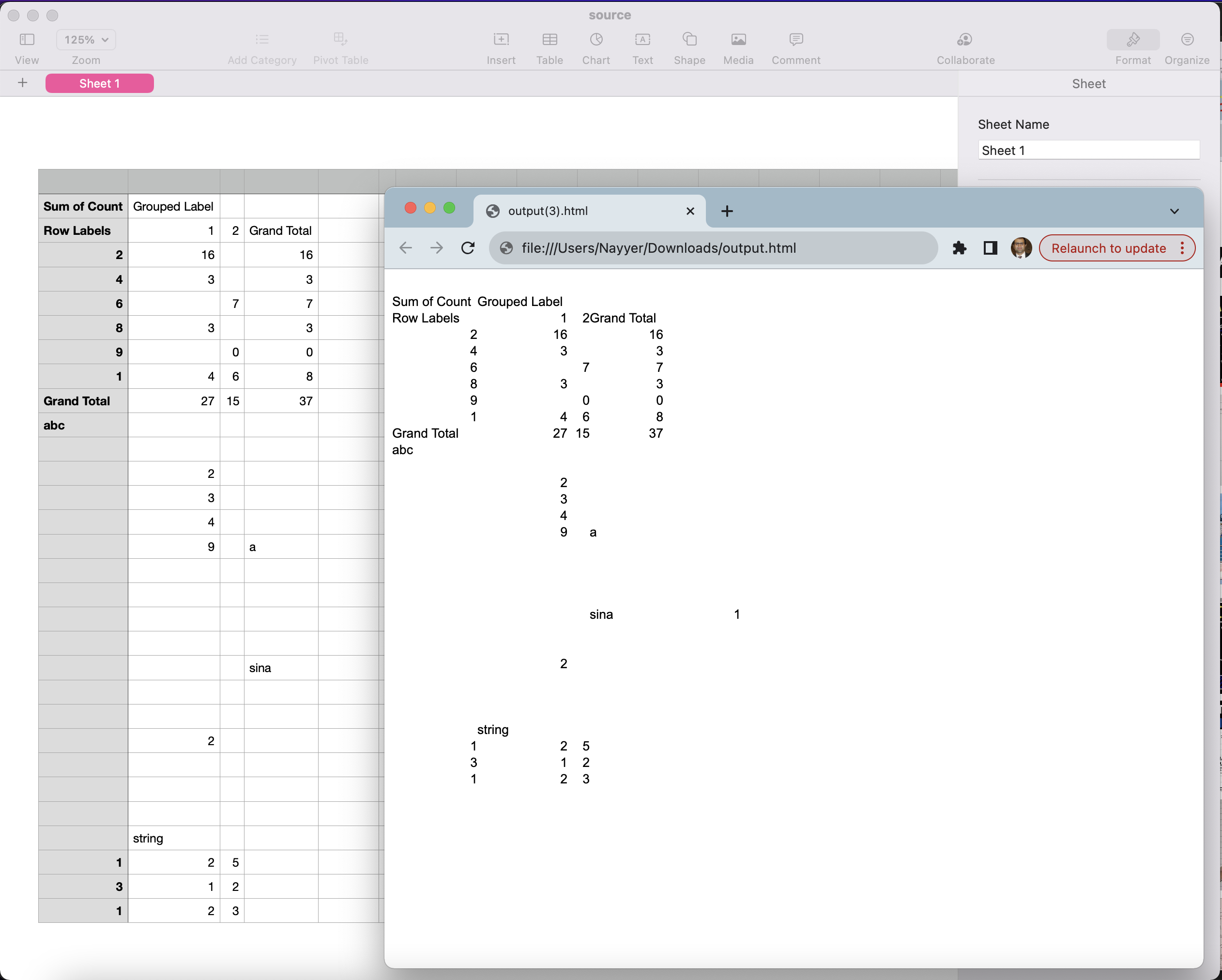
How to convert CSV to HTML using .NET Cloud SDK.
In the ever-evolving landscape of web development, the need for dynamic and visually engaging content has become more pronounced than ever. As businesses and developers seek innovative ways to present data on the web, the conversion of CSV (Comma-Separated Values) files to HTML emerges as a pivotal solution. By harnessing the capabilities of the .NET REST API, we can turn row data values into interactive and responsive HTML content. This transformation not only enhances the visual appeal of data but also contributes to a more immersive and user-friendly web experience.
- .NET REST API for CSV to HTML Conversion
- How to Convert CSV to HTML in C# .NET
- CSV to Web Conversion using cURL Commands
.NET REST API for CSV to HTML Conversion
Aspose.Cells Cloud SDK for .NET offers a wealth of features, including Excel file manipulation, versatile conversion formats, cell data handling, chart generation, and formula calculations. So, by leveraging its robust capabilities, you can easily convert CSV file to HTML page.
Enhance your workflows by ensuring an efficient management and presentation of data within web applications.
Firstly, we need to search Aspose.Cells-Cloud in NuGet packages manager and click the Add Package button. Secondly, obtain your client credentials from cloud dashboard. If you do not have an existing account, simply create a free account by following the instructions specified in the quick start article.
How to Convert CSV to HTML in C# .NET
Let’s explore the details on how we can programmatically convert CSV to HTML online using C# .NET.
CellsApi cellsInstance = new CellsApi(clientID, clientSecret);
Firstly, create an object of CellsApi class where we pass client credentials as arguments.
SaveOptions saveOptions = new SaveOptions()
Secondly, create an instance of SaveOptions where we define the output file format as HTML and set a parameter to compress the HTML content.
PostWorkbookSaveAsRequest postworkbookSaveAsRequest = new PostWorkbookSaveAsRequest()
Thirdly, create an instance of PostWorkbookSaveAsRequest where we specify the name of input CSV file, name of resultant HTML and other optional parameters.
var response = cellsInstance.PostWorkbookSaveAs(postworkbookSaveAsRequest);
Call the API to initiate CSV to HTML conversion. Once the code is successfully executed, the resultant HTML file is saved in cloud storage.

Preview of CSV to HTML conversion.
CSV to Web Conversion using cURL Commands
As a second approach, you may consider streamlining the process of converting CSV to HTML through an ease of using Aspose.Cells Cloud and cURL commands. So, by utilizing the cURL commands, you can send a request to the PostWorkbookSaveAs endpoint, specify the input CSV file and the desired output format as HTML. This approach also ensures accuracy and efficiency, while transforming raw CSV data into a visually appealing and interactive HTML content.
The first step in this approach is to generate a JWT access token using the following command:
curl -v "https://api.aspose.cloud/connect/token" \
-X POST \
-d "grant_type=client_credentials&client_id=921363a8-b195-426c-85f7-7d458b112383&client_secret=2bf81fca2f3ca1790e405c904b94d233" \
-H "Content-Type: application/x-www-form-urlencoded" \
-H "Accept: application/json"
Now, please execute the following command to convert the CSV to Web HTML format. After the conversion, the resultant HTML file is stored in cloud storage.
curl -v "https://api.aspose.cloud/v3.0/cells/{myInput}/SaveAs?newfilename={outputFile}&isAutoFitRows=true&isAutoFitColumns=true&checkExcelRestriction=false" \
-X POST \
-H "accept: application/json" \
-H "authorization: Bearer {accessToken}" \
-H "Content-Type: application/json" \
-d "{ \"SaveFormat\": \"html\", \"CachedFileFolder\": \"string\", \"ClearData\": true, \"CreateDirectory\": true, \"EnableHTTPCompression\": true, \"RefreshChartCache\": true, \"SortNames\": true, \"ValidateMergedAreas\": true}"
Replace myInput with the name of input CSV file available in Cloud storage, outputFile with the name of resultant HTML file to be generated in cloud storage and accessToken with JWT access token generated above.
Conclusion
In conclusion, the journey from CSV to HTML unveils two distinct yet effective pathways. The .NET Cloud SDK offers versatile Excel-related functionalities, serves as a robust tool for manipulating CSV data and orchestrates its conversion to various formats, laying the groundwork for a comprehensive data transformation. On the other hand, cURL commands in conjunction with Aspose.Cells Cloud API offer a streamlined, cloud-based approach, simplifying the conversion process and ensuring the delivery of dynamic HTML content. Now depending upon your needs, integrate these solutions and enhance data presentation on the web. So, step into a new era of interactive and visually appealing content !
Useful Links
Related Articles
We highly recommend visiting the following blogs: